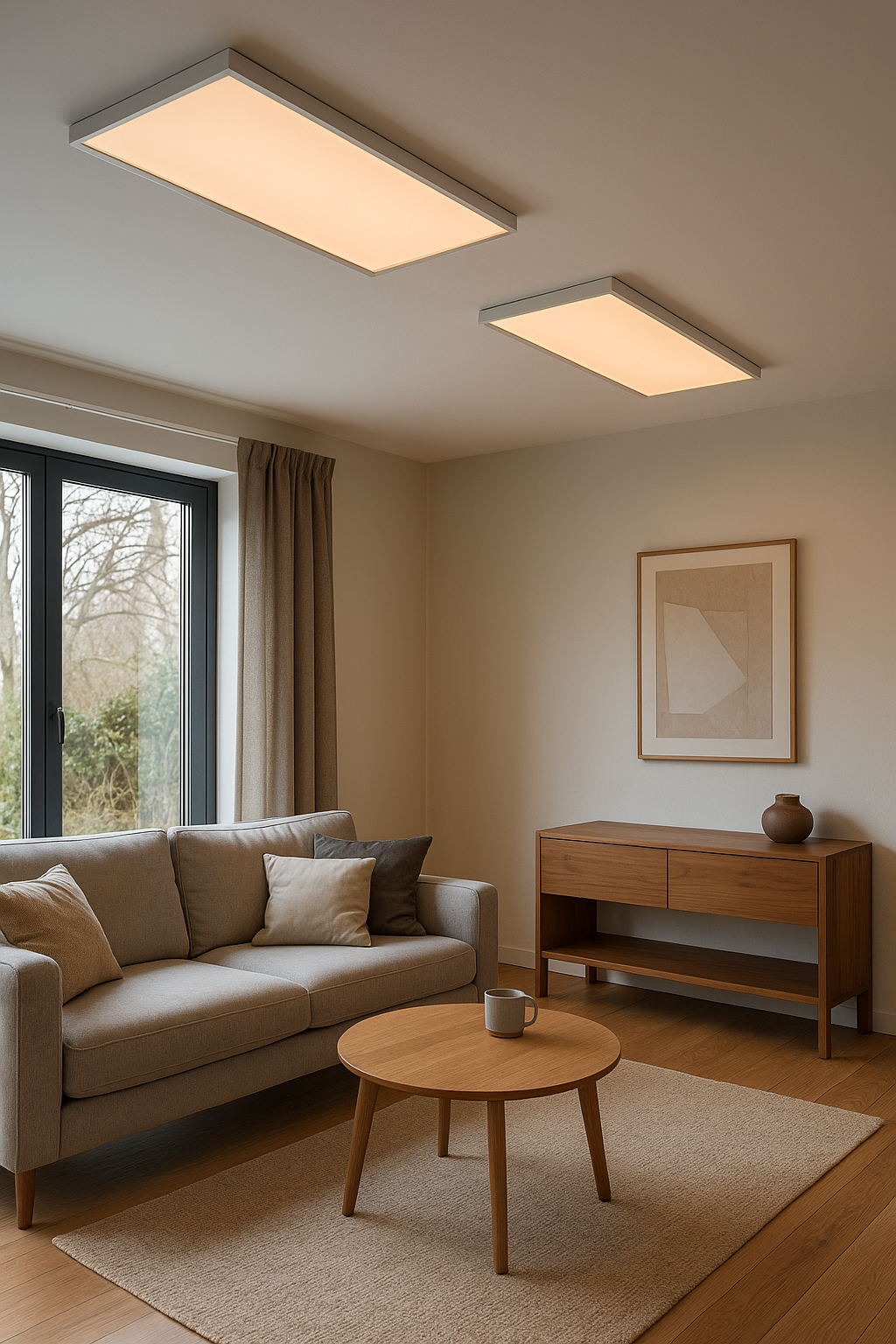
Why Portuguese homes often feel cold
Many residents in Portugal notice that their homes are surprisingly chilly in winter — even though the outdoor temperature is mild compared to Northern Europe. This is especially true in properties with features like:
- Thin outer walls and limited insulation
- Concrete or tiled floors that retain cold
- No central heating system (common in older or budget builds)
- Higher humidity levels indoors
What this means: even at 14–17 °C indoors, the moisture and cold surfaces make it feel much colder than you might expect. This applies on the mainland, as well as on Madeira and the Azores.
What is infrared (IR) heating exactly?
Instead of relying on warmed air, infrared heating panels radiate energy that warms:
- The walls, floor and ceiling surfaces
- Furniture and people directly
It’s the same principle as standing in sunlight — you feel warmth even if the ambient air temperature is relatively low.
Why infrared heating is becoming popular in Portugal
Because the main issue isn’t always the air temperature — it’s the cold surfaces and moisture.
Traditional heating systems (electric panels or heat-mode AC/heat pump):
- Warm the air first, which then hits cold surfaces → lastingly cold walls / condensation / risk of mould
- Often leave feet cold while upper body feels warm
- Require higher air temperatures to feel comfortable → higher electricity use
Infrared heating instead:
- Warms the surfaces and body directly → reduces cold pull from walls
- Can achieve comfortable conditions at a lower ambient air temperature
- Helps keep walls dry, reducing mould risk
Advantages of infrared heating
| Benefit | Explanation |
|---|---|
| Warms people/surfaces rather than just air | You feel comfortable at lower air temps |
| Reduces humidity and mold risk | Warmer surfaces mean less condensation |
| Lower electricity usage in many cases | Less need to overheat the room |
| Quiet and low-maintenance | No fans or moving parts |
| Discreet installation | Panels can be mounted in ceiling, as mirrors or panels |
| Allergy-friendly | No forced air circulation spreading dust |
Disadvantages and what to watch out for
| Drawback | Consideration |
|---|---|
| Doesn’t heat air instantly | If you want quick “warm air moment”, IR may feel different |
| Needs correct sizing and placement | Undersized panel often means full power all the time |
| Quality varies considerably | Cheap panels may underperform |
| Not ideal for extremely drafty rooms | You need to fix insulation/leaks first |
What fits best in Portugal, Madeira & Azores
| Usage | Best practice |
|---|---|
| Living room / lounge | Ceiling-mounted IR panels for even spread |
| Bathroom | IR panel or IR mirror above door for quick comfort |
| Bedroom | Smaller IR panel to keep surfaces warm while you sleep |
| Homes with moisture issues | IR panels outperform AC in drying out walls & floors |
Choosing infrared heating for your home
You should consider it if:
- You struggle with cold surfaces, damp walls or mould
- You’re looking for comfortable background warmth rather than blasting hot air
- Your electricity tariff is reasonable (which many Portuguese homes may achieve)
You might reconsider if:
- You have very poor insulation and need full-house heating
- You use the building only briefly and invest in a full IR system may not pay off
Summary
Infrared heating is an excellent choice for Portuguese housing — especially when the key issue is cold surfaces and damp rather than air temperature alone. It delivers a more natural, comfortable warmth compared to standard panel heaters or AC-heating — particularly for locals and northern Europeans living in Portugal.
Discover more from ::Mais:Oeste:TV::
Subscribe to get the latest posts sent to your email.




